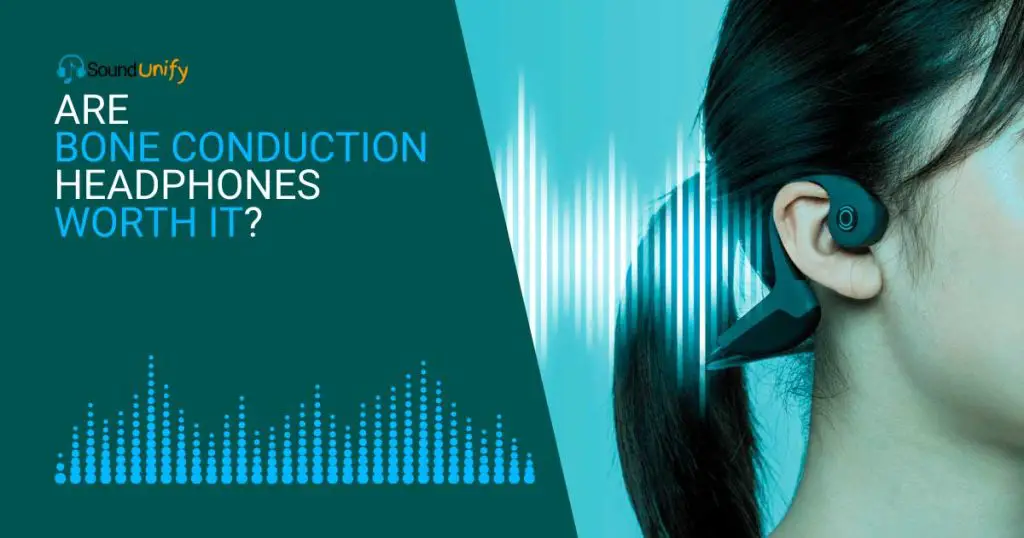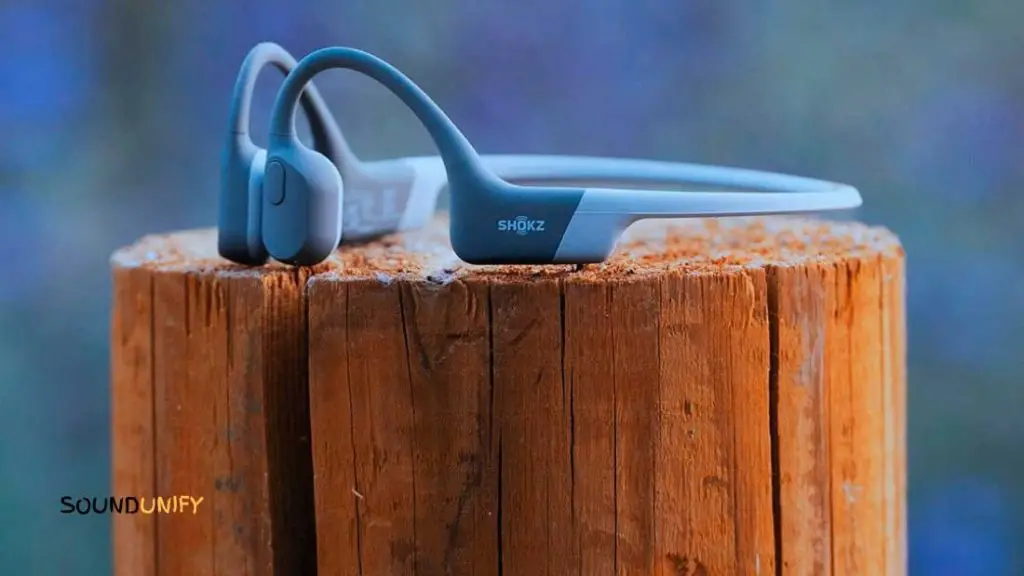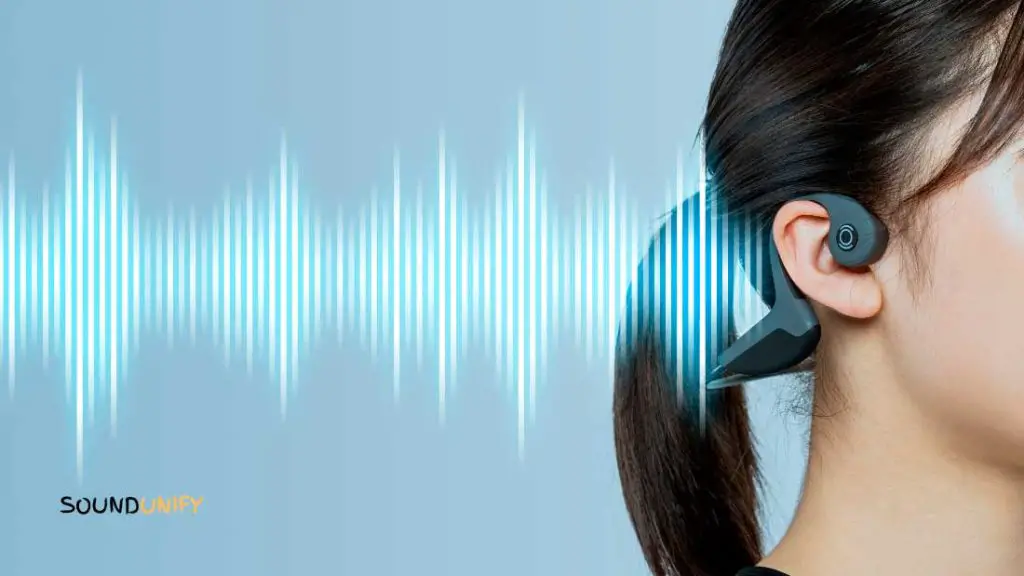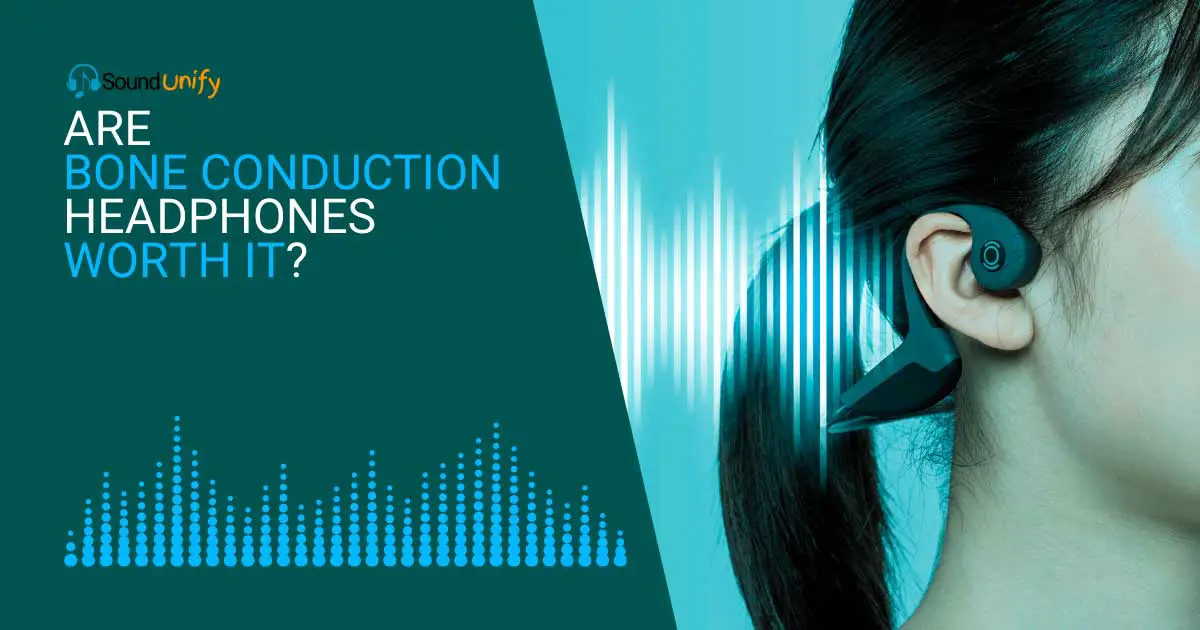Headphones are an essential part of any music lover’s life. Not only do they help you get the most out of your favorite tunes, but they also let you listen to music without disturbing those around you.
But what if there was a way to enjoy all the benefits of headphones without covering up your ears? Here enter bone conduction headphones.
These innovative audio devices offer many advantages over traditional headphones and could be just the thing for anyone looking to upgrade their listening experience.
But are bone conduction headphones worth it? The answer depends on the individual and their needs. These could be an excellent option for individuals who want a lightweight and comfortable set of headphones that can hear outside noises while still listening to music. Traditional headphones may be better for those who want superior sound quality and louder volume levels.
This article will explore the features and benefits of bone conduction headphones, helping you decide whether they’re right for you.
Are Bone Conduction Headphones Worth It?

Bone conduction headphones are worth considering if you’re looking for an alternative to traditional headphones. They provide a unique listening experience that allows you to hear the sound directly through your bones without needing earbuds or over-ear cups.
This means you can still hear the environment around you, eliminating any potential discomfort associated with traditional headphones. They’re also great for athletes who don’t want to sacrifice hearing their environment while working out.
Additionally, bone conduction headphones are usually cheaper than other headphones and balance comfort and sound quality. All in all, they’re worth considering if you’re looking for a different listening experience.
How Do Bone Conduction Headphones Work?
Bone conduction headphones transmit audio vibrations directly to your inner ear through your skull’s bones.
When you wear headphones, sound waves do not travel through the air. Your eardrums instead vibrate against your bones and are picked up by your inner ear.
The process begins with a small transducer on either side of your head near your temples. These transducers take in sound waves and convert them into vibrations, which are then sent to the bones in your skull.
The vibrations then pass through the temporal bone, located behind each ear, which acts like an amplifier and directs them toward the cochlea, a part of the inner ear that helps us to hear.
Once inside the cochlea, these vibrations stimulate nerve endings, which send signals to our brains, and we interpret them as sounds.
Pros and Cons of Bone Conduction Headphones

Bone conduction headphones can provide some unique advantages to users, but some potential drawbacks should be considered.
Pros
- Increased Safety: One of the main benefits of bone conduction headphones is that they allow users to hear their environment while listening to audio. This great safety feature lets users hear surrounding traffic while running or biking outside.
- Bypasses Traditional Hearing Loss: For those with hearing loss, bone conduction headphones can be an excellent way to listen to sounds. This type of headphone bypasses traditional hearing loss by vibrating the sound directly through the bones in the skull.
- Quality Sound: Bone conduction headphones provide quality audio even without the best connection. This is because the sound waves are sent directly to the inner ear, bypassing other obstacles that can cause interference.
- Comfortable to wear: Bone conduction headphones are often lighter than over-ear and in-ear headphones, making them more comfortable. They are also worn around the back of the neck rather than the ears, making them less likely to cause ear fatigue.
- Provide superior sound quality: Bone conduction headphones are often very capable of providing clear sound, even in louder environments. Sound waves do not need to travel through the air, which can be filled with interference.
- No ear fatigue: As the headphones are worn on the back of the head rather than around the ears, they are less likely to cause any ear fatigue. This is especially advantageous for those who listen to music or audio for long hours.
- Can help with hearing loss: For those with hearing loss, the vibrational sound provided by bone conduction headphones can help improve sound clarity and overall hearing.
- Versatility: Bone conduction headphones are compatible with most devices and can be used in various situations. This makes them a great choice for many types of users.
Cons
- Poor sound isolation: Bone conduction headphones may not provide the same sound isolation as traditional over-ear or in-ear headphones, so it can be difficult to block out surrounding noise.
- Potential Leakage: Bone conduction headphones are designed to vibrate on the bones of the skull. This means some sound leakage can make it difficult to keep audio private.
- Not Good for Low Frequencies: Bone conduction headphones are not designed to resonate at low frequencies. This can make them less suitable for listening to bass-heavy music.
- Expensive: Bone conduction headphones can be expensive compared to traditional headphones. This is particularly true compared to budget headphones, which could deter some consumers.
Who Are Bone Conduction Headphones Best For?

Bone conduction headphones are a great choice for those who have specific needs. Bone conduction headphones can provide the perfect audio solution whether you’re an avid runner, cyclist, or yoga enthusiast who needs to be aware of your surroundings while listening to music.
They are also great for those with hearing impairments, as they transmit sound through vibrations on the bones of the skull, bypassing the eardrum entirely.
Those with hearing loss may find this type of headphones particularly useful as they don’t block out ambient noise like traditional headphones.
While enjoying your favorite tunes, you can still hear what’s happening around you. This makes them ideal for use in noisy environments such as busy city streets, public transport, and airports.
These headphones are also waterproof and sweatproof – making them suitable for all kinds of activities, including running or swimming.
Plus, they come with various additional features such as voice commands and hands-free calling capabilities, which are ideal for those who need an effective way to stay connected while traveling or to exercise outdoors.
Overall, suppose you’re looking for headphones that provide superior comfort levels and access to your surrounding environment without compromising sound quality. In that case, bone conduction headphones could be just what you need.
Are Bone Conduction Headphones Comfortable?

Yes, bone conduction headphones are usually fairly comfortable. The headphones fit around the back of the head or neck instead of around the ears, which helps prevent fatigue. The headphones are also usually lightweight, which is ideal for long listening sessions.
Bone conduction headphones are comfortable because they vibrate directly to the bones in the ear. This causes less pressure on the ears and causes less ear fatigue overall compared to traditional headphones, which emit sound directly into the ear.
Moreover, bone conduction headphones do not require a seal around the ear, which is often uncomfortable for some. They also avoid the problem of sound leakage from traditional headphones, which can make listening to music at low volumes uncomfortable.
Additionally, bone conduction headphones usually have low sound distortion since the sound is transmitted more directly, resulting in a more enjoyable listening experience.
What Are the Best Bone Conduction Headphones?
The best bone conduction headphones can vary depending on personal preference and price. However, popular choices include the Shokz OpenRun Pro, AfterShokz Aeropex, and Shokz OpenSwim.
The Shokz OpenRun Pro is a lightweight and durable headset designed for athletes and those who need to hear their environment. It has a battery life of up to 10 hours and is sweatproof, making it suitable for various activities.
The AfterShokz Aeropex is another popular model that offers 8 hours of music time, intuitive controls, and a secure fit. It also has sound-blocking technology to keep you from being distracted by noises around you, allowing you to focus on your activities.
Lastly, the SHOKZ OpenSwim is designed for studio use and music production. It offers excellent sound clarity and isolation, making it an ideal choice for those who need to monitor and mix tracks.
FAQ
Can I use bone conduction headphones with hearing aids?
Yes, bone conduction headphones are compatible with hearing aids. Traditional headphones create sound waves that travel through the air, so they cannot be used with hearing aids. Bone conduction headphones, however, bypass this by vibrating sound waves directly through the bone of the skull.
This can make listening to music, watching movies, and even talking on the phone much easier for those who use hearing aids. However, it is essential to note that bone conduction headphones work best at lower frequencies, so they may not be suitable for those looking for a more powerful listening experience.
Can I use bone conduction headphones with tinnitus?
Yes, bone conduction headphones can be beneficial for those with tinnitus. Tinnitus is a condition characterized by a ringing or buzzing in the ear. Traditional headphones may make this ringing or buzzing more noticeable, creating sound waves that travel through the air.
Bone conduction headphones, however, create sound waves that vibrate directly through the bones of the skull. This bypasses the air and reduces any possible interference, making it easier to listen to music or watch movies without feeling the effects of tinnitus. Therefore, bone conduction headphones can be an excellent option for tinnitus patients.
Does Bone Conduction Headphones Worth Buying?
Yes, bone conduction headphones are worth buying for many people. The biggest advantage of bone conduction headphones is that they allow users to hear their environment while listening to audio. This makes them much safer for activities like running or biking outside.
Bone conduction headphones are also beneficial for hearing loss, bypassing traditional hearing loss by vibrating sound directly to the inner ear. Additionally, bone conduction headphones provide quality sound, even in louder environments, due to sound waves bypassing obstacles that can cause interference.
Finally, bone conduction headphones are much more comfortable than traditional over-ear or in-ear headphones because they are worn on the back of the neck and don’t require a perfect seal around the ear. This eliminates ear fatigue, as well as the associated discomfort.
Conclusion
It seems that the only differences are in convenience and sound quality. Generally, people prefer bone conduction headphones because they don’t have to put effort into holding their phones close to their ears. However, if you love to listen to music while working out or cycling, you can opt for regular headphones.
James Dimento is a Chief-in-Editor of SoundUnify. He is a headphone enthusiast and creative writer passionate about audio technology. He has three years of experience writing about headphones and sound quality and is responsible for creating reviews and taking care of all administration.
